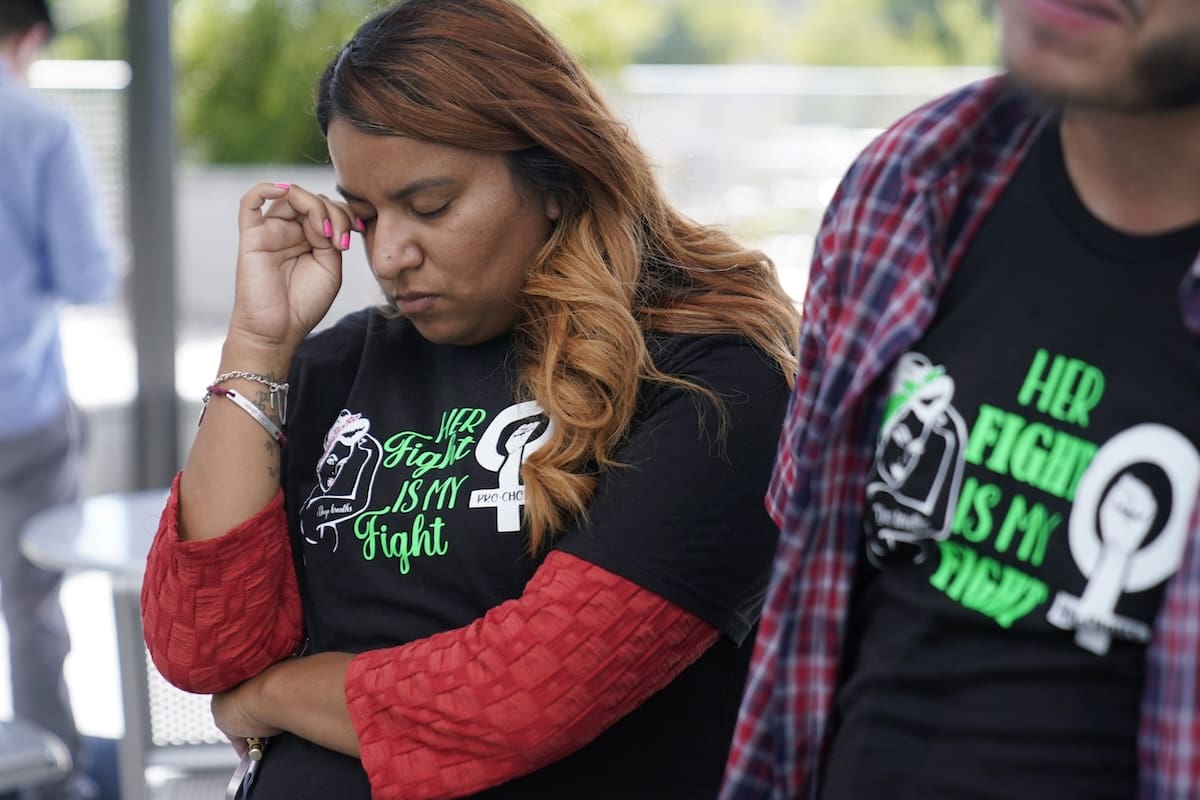A routine 20-week ultrasound turned into a heart-wrenching moment for a Texas mother, Sam Casiano, who discovered that her unborn daughter, diagnosed with anencephaly, had no chance of survival outside the womb. Already a mother of four, Casiano was shocked by the unexpected pregnancy shortly after the birth of her son, Louie.
Casiano initially visited her doctor suspecting a urinary infection, only to learn she was pregnant again. Despite the surprise, her family, including her husband Luis, was thrilled, eagerly discussing potential names for the new baby.
However, the excitement turned to despair during the ultrasound when the technician, after a sudden silence, informed her of the fatal diagnosis: “I’m sorry Mrs. Casiano, you’re having a girl but she has been diagnosed with anencephaly and it means that she’s incompatible with life.”
Anencephaly, a condition where parts of the brain and skull are missing, is a fatal birth defect. Casiano’s devastation was immediate; she vomited upon reading about the condition on her phone.
She called Luis, who was unable to accompany her, with the heartbreaking news. “Our daughter was going to die,” she told him, leaving him in disbelief.
Her OB-GYN confirmed the grim prognosis, explaining that due to Texas’ stringent abortion laws, Casiano had to continue the pregnancy. “There’s an abortion ban. That means that you have to go on with this pregnancy,” the doctor stated.
Casiano, raised Catholic, had never considered abortion until faced with this situation. The Texas legislature’s abortion restrictions, including a 6-week ban and a total ban from conception, left her without options, even in such dire circumstances.
Despite suggestions to leave Texas for an abortion, the logistical and financial hurdles were insurmountable. Casiano endured the pregnancy, feeling her baby move for 12 weeks, knowing she would not survive. They named her Halo Hope, holding out hope despite the diagnosis.
The impact extended to her other children, who faced questions about the baby. “It hurt me for my children to be upset,” Casiano said, noting the emotional toll on her family.
After Halo was born
Casiano went into labor at 32 weeks. Halo was born alive but in distress. “Her eyes started to slowly bleed,” Casiano recalled. The baby struggled for air, likened to a fish out of water. Halo lived for four agonizing hours before passing away.
Thanks to community support, the family was able to afford a proper funeral for Halo. But Casiano wanted to ensure her daughter’s suffering wasn’t in vain.
Legal battle and advocacy
Casiano joined a lawsuit, Zurawski v. Texas, challenging the state’s abortion laws, seeking clearer exceptions for cases like hers. A district judge initially ruled in their favor, allowing doctors more discretion in emergencies, but the Texas Supreme Court later overturned this decision.
Feeling “stabbed in the back” by the ruling, Casiano decided to have her fallopian tubes removed, avoiding future pregnancies. The ordeal also strained her marriage, leading to a separation from Luis.
Now, Casiano speaks publicly about reproductive rights, emphasizing the importance of awareness and advocacy. She continues to honor Halo’s memory, visiting her grave with her children and celebrating her life.
—
Read More Kitchen Table News






